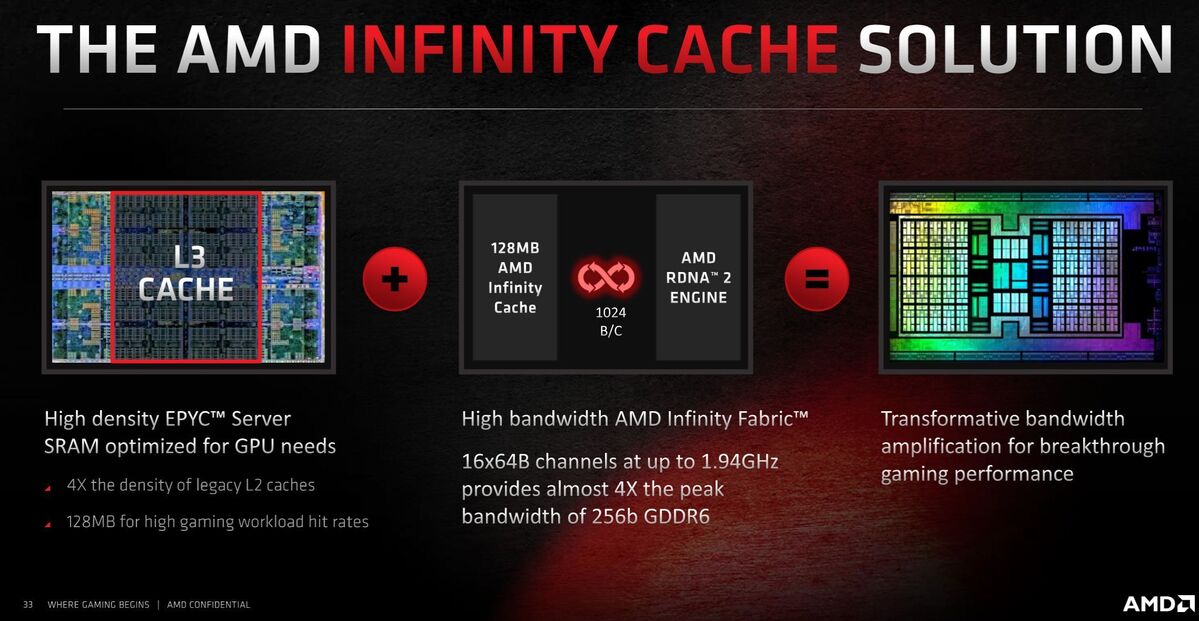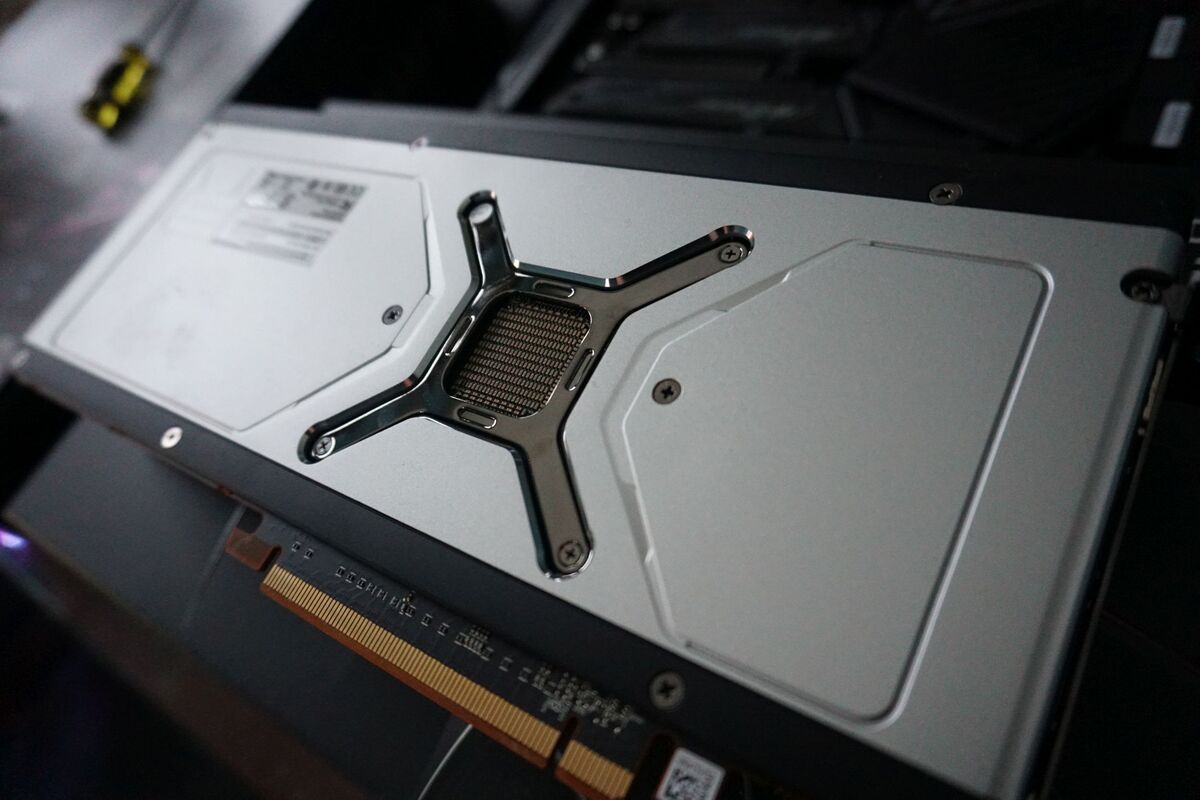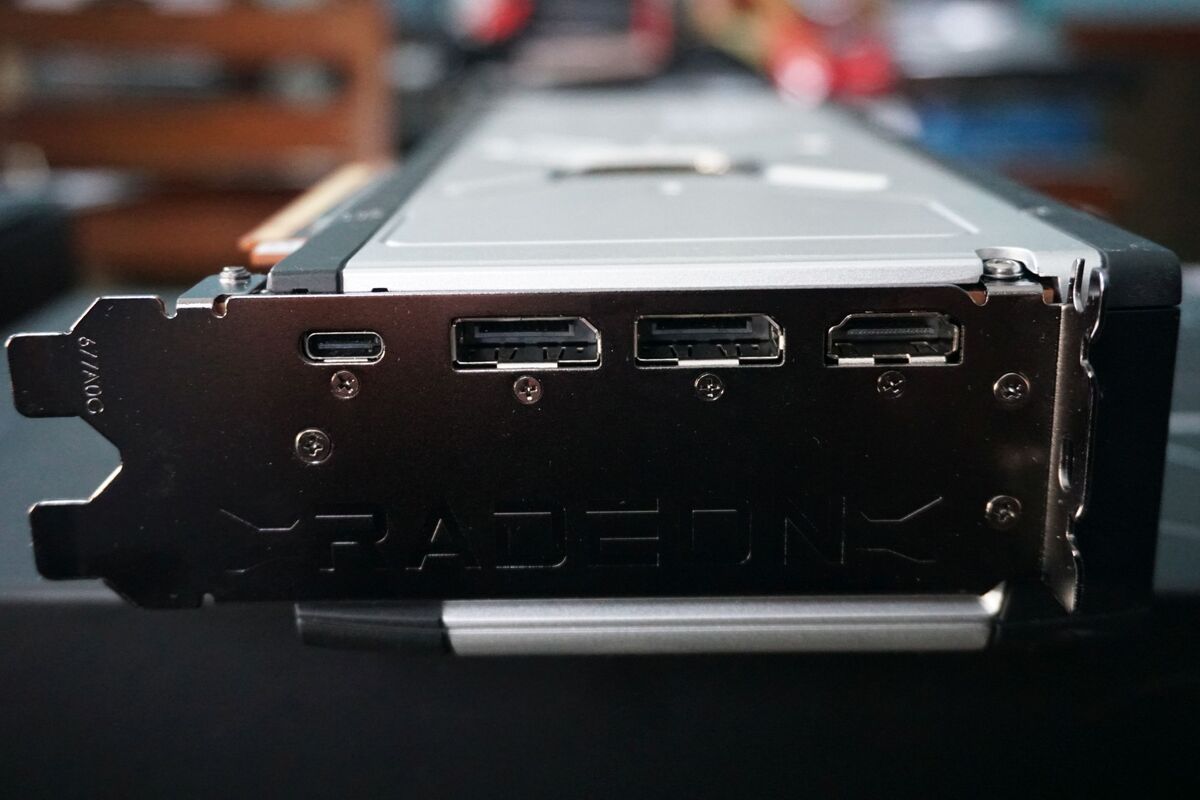 Credit: Brad Chacos/IDG
Credit: Brad Chacos/IDG
The Radeon RX 6900 XT is AMD’s latest effort to loosen Nvidia’s stranglehold on high-end graphics cards. Attempting to follow on the stunning success of the Radeon RX 6800-series that battles with the GeForce RTX 3070 and 3080, the 6900XT aims even higher, setting its sights on the extravagant $1,500 GeForce RTX 3090 despite packing a price tag a full $500 less.
AMD largely manages to achieve its goals. The Radeon RX 6900 XT meets or outright beats the RTX 3090 in more games than not, and essentially draws even overall at 1440p resolution. This is one blistering-fast GPU, and it can get even faster when you pair it with a new Ryzen 5000 processor thanks to AMD’s Smart Access Memory technology. If you’re all-in on AMD and want the ultimate Team Red gaming experience, or simply want best-in-class frame rates in modern games while spending a whole lot less than you would with Nvidia, the Radeon RX 6900 XT could be a viable option.
Still, at $1,000 the Radeon RX 6900 XT isn’t cheap, and “better value” isn’t what many deep-pocketed gamers look for when they’re investing this much into a graphics card. AMD’s latest GPU also lacks the bespoke software support that makes the GeForce RTX 3090 so appealing for content-creating prosumers—the real audience for that card. AMD stressed to reviewers that this card was made for gamers. Through that lens, it’s a much better value for gamers than the RTX 3090 and easily the most competitive enthusiast-class GPU that AMD has fielded in years. Most people would be best off buying a Radeon RX 6800 XT or GeForce RTX 3080, though.
Keep reading for more details. If you want a quicker take, check out our summary of the 5 things you need to know about the Radeon 6900 XT. Let’s dig in.
Radeon RX 6900 XT specs, features, and design
The Radeon RX 6900 XT packs the full-fat version of the “Navi 21” GPU that debuted in the Radeon RX 6800 and 6800 XT. This is the real “Big Navi,” with 80 compute units (versus the RX 6800 XT’s 72 CUs) and a bump up in the stream processor (AMD’s CUDA core equivalent), ray accelerator, and texture fill rate counts that coincide with that. We covered what’s new in AMD’s next-gen architecture in our RDNA 2 deep-dive.
 AMD
AMDAMD stuck to the same rated clock speeds as you get with the 6800 XT, meaning it has a 2,250MHz Boost lock and an average 2,015MHz Game clock. In practice, however, AMD’s automatic boosting algorithms go far beyond that in most games as it scales higher if the graphics card has power and thermal headroom to spare. The Radeon RX 6900 XT also packs the same 300-watt total board power rating as the 6800 XT despite packing eight more CUs, which AMD attributes to the pushing the best chips toward this part. The company provides extra current for the 6900 XT so it can respond to demands for brief bursts of power. To be safe, AMD recommends you pair this GPU with an 850W power supply, rather than the 750W units recommended for the 6800 XT.
 AMD
AMD
Secret sauce
The memory configuration remains the same, but that’s no issue since it’s so potent. All of these high-end Navi 21 GPUs get paired with an ample 16GB of GDDR6 memory—well below the RTX 3090’s whopping 24GB of GDDR6X, but more than enough for the gaming tasks this card targets (as well as 4K video editing workloads). That memory communicates with the GPU over a 256-bit bus. That bus width may seem paltry at first blush, but it’s offset by a surprisingly effective new 128MB “Infinity Cache” that can store a lot of a given scene’s frame data directly on die. The Infinity Cache lets the GPU tap the memory much less often, benefiting memory speeds and latency as well as power efficiency. Again, we covered Infinity Cache in-depth as part of our RDNA 2 deep-dive.
The Radeon RX 6000-series marks the debut of real-time ray tracing on AMD hardware, and RDNA 2 also powers the Xbox Series X and PlayStation 5 consoles. AMD built a dedicated “ray accelerator” for improved ray tracing performance into each RDNA 2 compute unit. As the ultimate form of “Big Navi,” the Radeon RX 6900 XT has the most ray accelerators and the best ray tracing performance. The graphics card can play Shadow of the Tomb Raider and Metro Exodus well at 1440p resolution, as you’ll see in our benchmarks. Because AMD lacks a rival to Nvidia’s spectacular DLSS 2.0 feature, the Radeon RX 6900 XT can’t play ray-traced games at 4K with acceptable frame rates. That’s a major strike against a $1,000 graphics card designed for 4K gaming. AMD is working on a more open DLSS rival dubbed “Fidelity FX Super Resolution,” which it hopes will be used by PC and console developers alike. Public details are nonexistent, however, and the technology isn’t available for Radeon gamers yet.
 Brad Chacos/IDG
Brad Chacos/IDGThis card’s design mirrors that of the Radeon RX 6800 XT, which itself is a fatter version of the Radeon RX 6800. We did an extensive unboxing and hands-on of the Radeon RX 6800-series that shows off every detail of the design, and it all still applies here. In brief, it’s a fantastic upgrade, swapping out the noisy, hot blower-style coolers of past AMD reference designs for a triple-fan axial design, clad in a luxurious metal shell that oozes luxury. For the launch of the Radeon RX 6900 XT, AMD plans to release software that lets you control the illuminated logo’s RGB LEDs rather than locking them to the red they ship with by default.
 Brad Chacos/IDG
Brad Chacos/IDGAMD likes to tout that its reference design sticks to industry standards, with a 2.5-slot design, 10.5-inch length, and dual 8-pin connectors. By comparison, Nvidia’s rival 12.3-inch-long RTX 3090 Founders Edition expands to fill three full slots, uses a proprietary 12-pin power connection via an ugly bundled adapter, and introduces a radical new “flow-through” design. That design is essentially half blower-cooler and half axial-style cooler, but the axial half has no PCB or backplate over it, allowing hot air to pass through to be exhausted by your case fans.
Here’s the thing though: Nvidia’s RTX 3090 Founders Edition design is damned impressive. It’s ice cold and utterly inaudible, besting the performance of heavy metal custom 3090s with traditional axial fan coolers. AMD’s new cooler worked very well with the Radeon RX 6800 XT, but the beefier 6900 XT pushes its limits, resulting in much higher temperatures, as you’ll see in our benchmarks. There’s nothing wrong with AMD’s more conventional design approach, but massive triple-slot graphics cards are expected for ultra-high-end GPUs like this now. AMD probably would’ve been better off making the Radeon RX 6900 XT longer and thicker—a 2.5-slot card and a 3-slot both take three slots in a case—to improve cooling performance, especially considering that the GPU’s boost behavior is tied to thermal efficiency.
 Brad Chacos/IDG
Brad Chacos/IDG
Port report
Custom Radeon RX 6900 XT models by board partners like Sapphire, XFX, and Asus are expected to land in the coming weeks, and they should offer much cooler temperatures. On the plus side, AMD’s reference design looks great and runs very quietly. The rear of the card holds one HDMI 2.1 port, a pair of DisplayPorts, and a single USB-C connection for displays and VR headsets alike.
The Radeon RX 6900 XT also features a premium 14-layer PCB with 16 power-stage phases to deliver clean, efficient power with plenty of overclocking headroom. AMD spent a big chunk of its reviewers’ guide explaining nitty-gritty “manual performance tuning” details, but we review graphics cards in their stock out-of-box configuration.
Overclocking the step-down Radeon RX 6800 XT can result in tremendous frequency gains, though. We’ve been able to hit 2,500MHz or higher with no issue on the cards we’ve played with. AMD says it managed to achieve 2,750MHz on the 6900 XT in its labs with some additional tweaking, which resulted in an average performance uplift of about 5 percent in the six AMD-optimized games it tested on a system with Smart Access Memory enabled. Your mileage may vary, because the silicon lottery selects random winners.
 AMD
AMDAMD rolled out some nice software features alongside the Radeon RX 6000-series. The new “Rage Mode” preset in Radeon Software raises your card’s power and fan speed limits to unlock more performance without voiding your warranty. DirectX 12 Ultimate compatibility adds not just ray tracing, but also nifty features like Variable Rate Shading and Sampler Feedback. Smart Access Memory gives the Radeon RX 6000-series a performance uplift in some games when you pair it with a Ryzen 5000 processor in an X570 motherboard, and we’ll test it later. Check out our Radeon RX 6800-series review for more details about these new features.
AMD bundles a nice, wide cloth mousepad that echoes the RX 6000-series design with the Radeon RX 6900 XT, which I found to be a nice touch.
Now let’s get to testing, because there’s a lot.
Next page: Our test system, gaming benchmarks begin

















